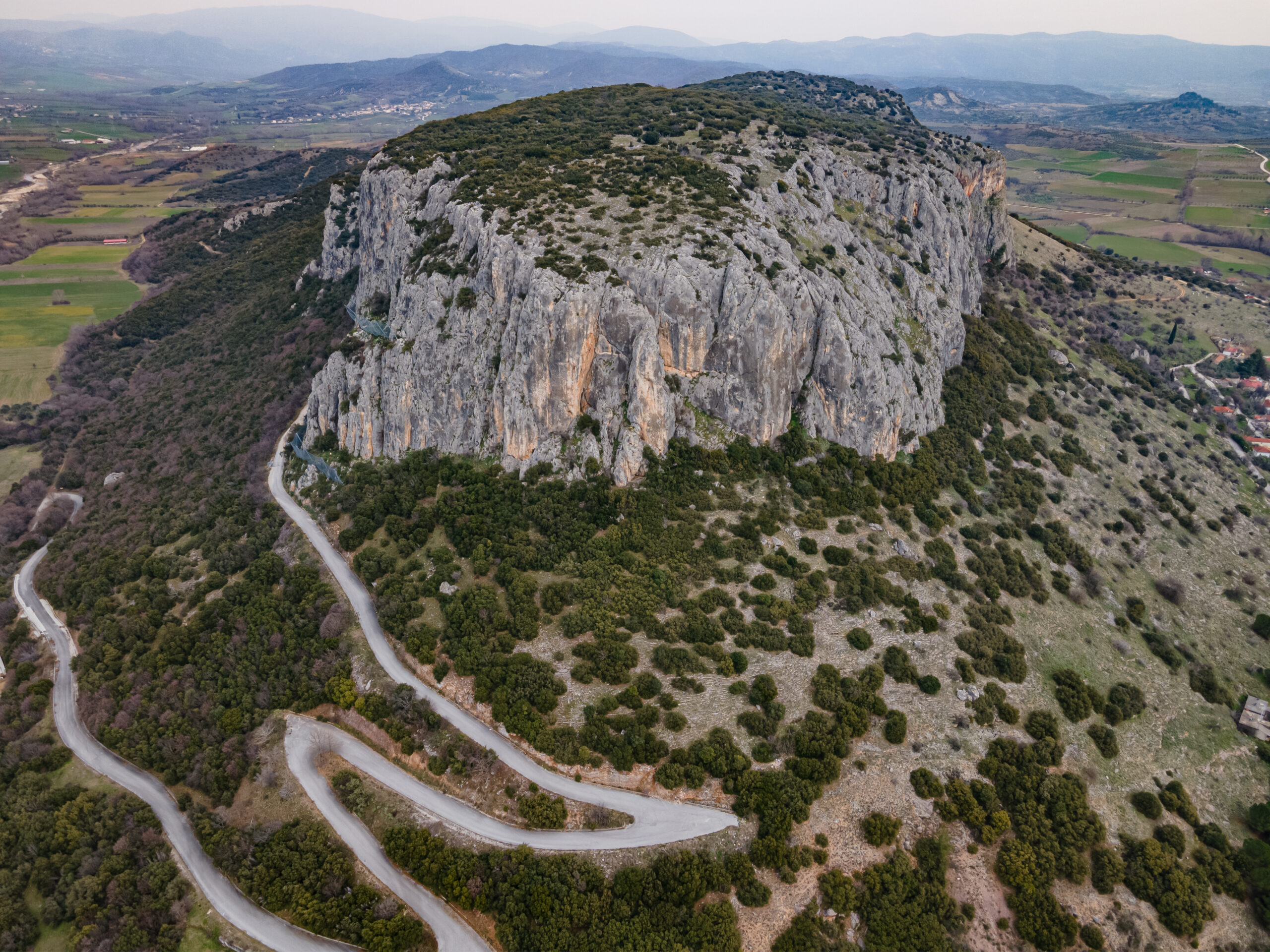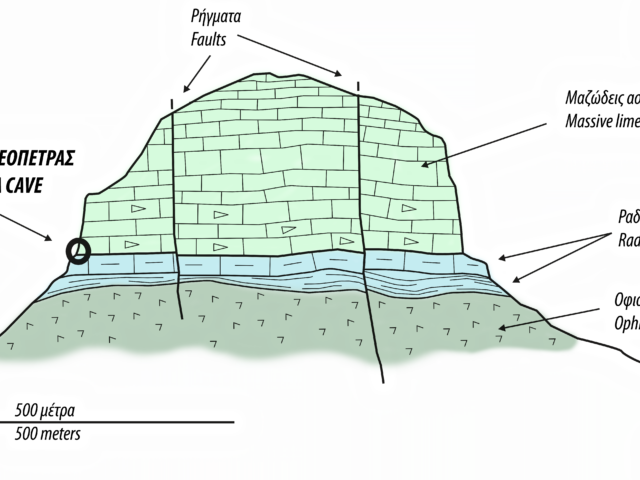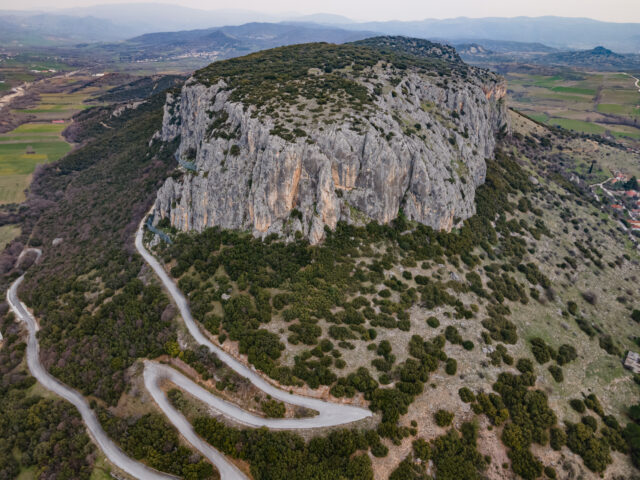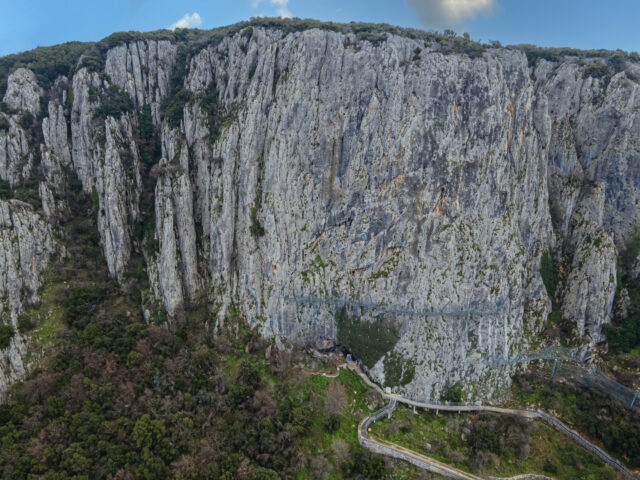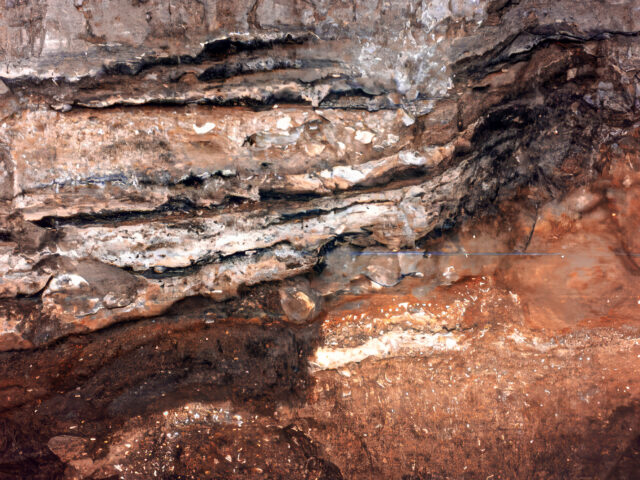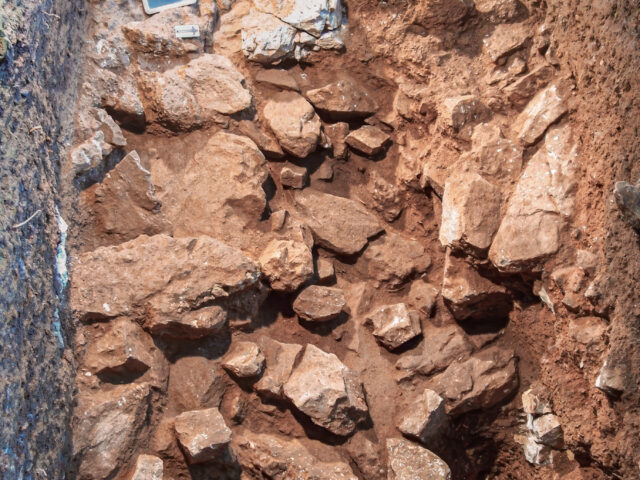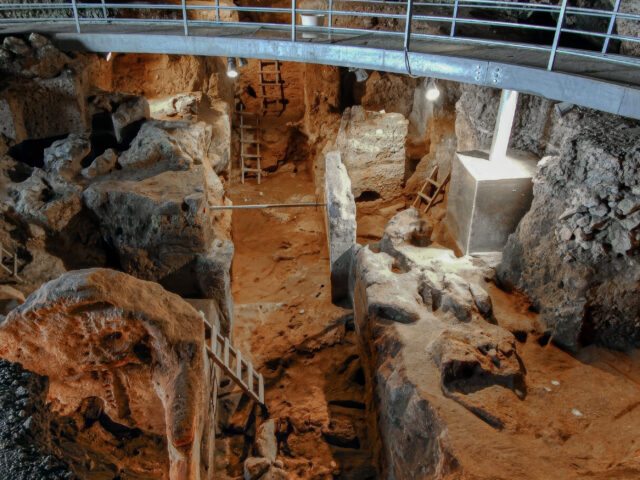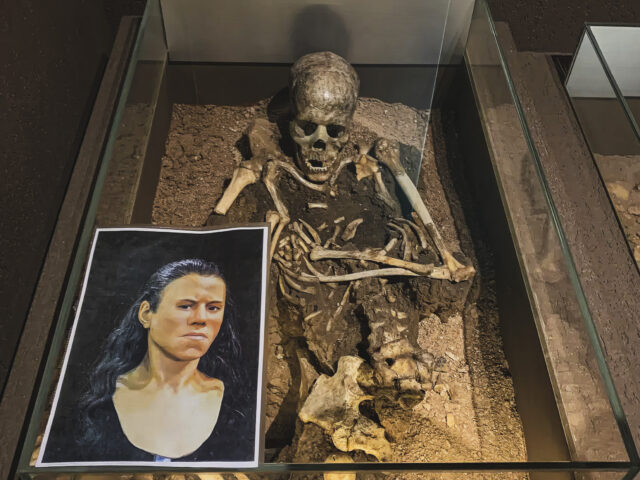06.Theopetra Cave
Address
Theopetra 422 00
GPS
39.679907514892, 21.680905028836
To the east of the Kalambaka plain, the impressive rock of Theopetra dominates above the homonymous village. The rock of Theopetra consists of hard limestone rocks of Cretaceous age which have been deposited over softer and more susceptible to erosion ophiolite rocks of Jurassic age. The different erosion of the two different types of rocks has led to what remains today as a limestone “cap” with steep, almost vertical slopes, similar to those that form the hills of the Acropolis and Lycabettus in Athens. At the base of the steep limestone slopes, on the north side of the rock, the Cave of Theopetra was formed. The cave is located at the base of the Cretaceous limestones, at their contact with the underlying formation of radiolarites (silica) and was formed by karst erosion and the circulation of water inside the rock. The limestones and radiolarites of the Theopetra rock are part of the same unit as the geological formations of Koziakas (Koziakas or Western Greece Unit). The limestone rocks of the rock have undergone intense tectonic deformation, with the presence of multiple and almost vertical faults that have shaped the steep slopes and create rock falls around the hill. In order to protect the entrance to the archaeological site of the Cave and visitors, protective measures have been placed on the steep slopes of the limestone (protection nets and anchorages). The shape of the cave is almost quadrilateral with small niches (karst channels) on its periphery, and has an area of almost 500 square meters. The entrance is arched, with an opening of 17 meters and a height of 3 meters, allowing plenty of natural light to enter its interior.
The location of the Theopetra Cave is becoming increasingly important as human presence is proven in all periods of the Middle and Upper Paleolithic, the Mesolithic, the Neolithic and beyond, bridging the Pleistocene with the Holocene. The location of the cave was close to the margins of a large lake and marshy areas that occupied almost the entire Trikala-Karditsa plain until about 20,000 to 15,000 years ago. Radiocarbon dating shows human presence at least about 130,000 years ago. Several features of the cave indicate human occupation. Excavations have revealed human finds, such as the skeleton of “Avgi”, a young woman from the Mesolithic period, as well as the second oldest human footprints from the Paleolithic period in Europe. Theopetra Cave contains one of the largest continuous prehistoric excavation sequences in Greece, which includes cultural remains from the Middle and Upper Paleolithic as well as the Mesolithic and Neolithic periods. The archives have shown significant paleoenvironmental data based on sedimentary features and botanical remains. The finds include an artificial stone wall that stands to this day, which was built around 21,000 BC. It is the oldest known example of an artificial construction. The wall is believed to have been built to protect its inhabitants from cold winds at the height of the last ice age.

